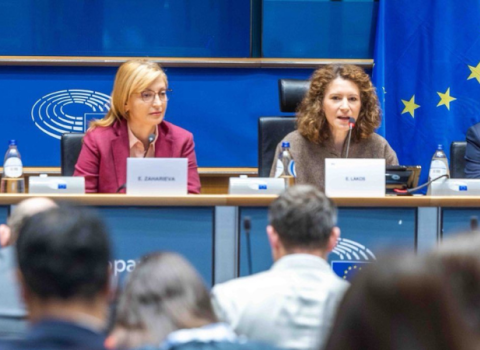But meeting the European Commission’s goal of a 27 per cent share across the European Union by 2030 is beyond the current capabilities of the continent’s power plants—not least because the market is still rewarding energy production by total volume instead of rewarding a shift to a more flexible and sustainable energy system, according to Goran Strbac, Professor of Electrical Energy Systems at Imperial College London, and a member of the Steering Committee of the SmartGrids European Technology Platform, a Commission initiative.
“Investors need to see that flexibility is valued,” he says. “Right now, we’re trading energy, but not flexibility”.
The laws of physics
What’s more, Strbac says, “a huge amount of money will be wasted because we’re defying the laws of physics by building capacity in the wrong places”: wind farms in Italy, for instance, when they would be more efficiently deployed in Scotland, and solar capacity in the British Isles, rather than in sunnier climes where the supply of solar energy would be more consistent.
If, on the other hand, Europe moved from a member-state-centric to a Europe-wide approach, and investors gained access to the revenue streams that flexible, integrated, cross-border energy generation and transmission systems promise to deliver, it could save as much as €50 billion a year, Strbac calculates—not exactly small change in an era of austerity.
Balancing act
Integrating renewables cost-effectively and Europe wide is largely a balancing challenge, says Strbac. “The balance of demand and supply needs to be met in real time and managing this in future system with inflexible low carbon generation technologies will become a massive challenge,” he points out. The lack of flexibility will limit the ability of the system to accommodate low-carbon generation, potentially leading to curtailments.
“Our analysis shows that in the UK 2025 scenario with wind generation and less flexible nuclear in combination with energy efficiency measures, more than 25% of wind production may need to be curtailed,” he said. So it is critical that the market rewards investment in flexible power generation to avoid ending up with the wrong plant portfolio in 10 years time.
Degradation in asset utilization
The variable flows of wind and solar power pose two dilemmas. While they displace fossil fuels, their ability to displace overall capacity in the energy system is limited. Second, as society seeks to electrify heat and transport sectors to decarbonise them, that shift will lead to increase in peaks of demand that are disproportionally higher than the total increase in demand. The result will be an enormous and costly need to add capacity. “Beyond 2030 in the UK, you’re fundamentally doubling the electricity infrastructure asset base for the same amount of energy delivered—and that’s very expensive”.
Smart solutions
Meanwhile, better demand-side management could help smooth the peaks and troughs that currently bedevil system planning. And smart technologies offer the key to improvement in both balancing and asset utilization, in Strbac’s view.
If, for example, dishwashers, fridges and other common household appliances had “smart” options, renewables could be more efficiently absorbed and consumers themselves would realize significant savings. So significant, in fact, that Strbac reckons it would make sense for all consumers, including the so-called fuel poor, to have such appliances. Also, demand flexibility in commercial and industrial premises could significantly contribute to enhancing the ability of system to absorb low carbon generation and reduce peaks and hence enhance the utilization of infrastructure.
New business models
Currently, however, as he ruefully acknowledges, “there’s no money in being smart. We need a new business model to help make it happen”. The present market structure favors investment in asset-heavy solutions. That’s because the model for compensating utilities rewards volume – “the more you build the higher the profits.” Instead, incentives should reward getting better use out of existing assets, Strbac insisted.
Energy storage can be cost-effective and play an increased role in solving the challenges posed by renewables if the EU can overcome a siloed approach to electricity generation, transmission and distribution. Smart technologies could bring benefits to each of these sectors, which currently don’t talk to each other, Strbac said. But reaping them would require closer coordination between generation, transmission, and distribution companies.
The Danes, he observes, have integrated heat and power, which is a step in the right direction. True flexibility, however, won’t be achieved until conflicts and synergies are fully understood at the policy level and a whole-system, Europe-wide approach persuades investors that flexibility really can deliver value.
How close are we to achieving that goal? “The EU is working towards integrating balanced markets,” Strbac observes. And the current focus on cost reduction should help. They key issue today is getting the market incentives right and stimulating investment in flexible power generation. “We can’t afford to waste money anymore. If we build the wrong plant today, we’ll have infrastructure for the next 40 years that is not fit for future requirements. The time to act is now.”




 A unique international forum for public research organisations and companies to connect their external engagement with strategic interests around their R&D system.
A unique international forum for public research organisations and companies to connect their external engagement with strategic interests around their R&D system.